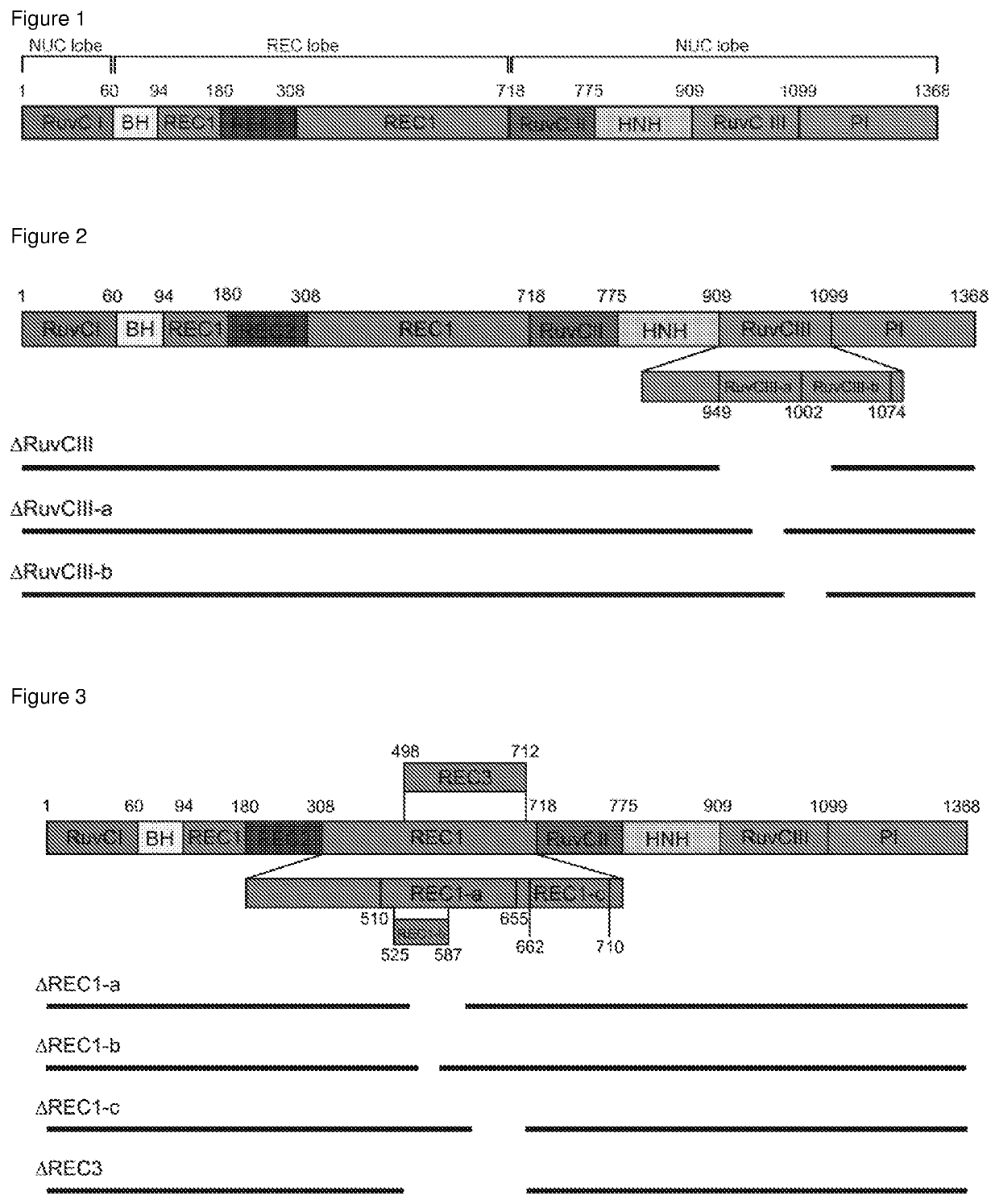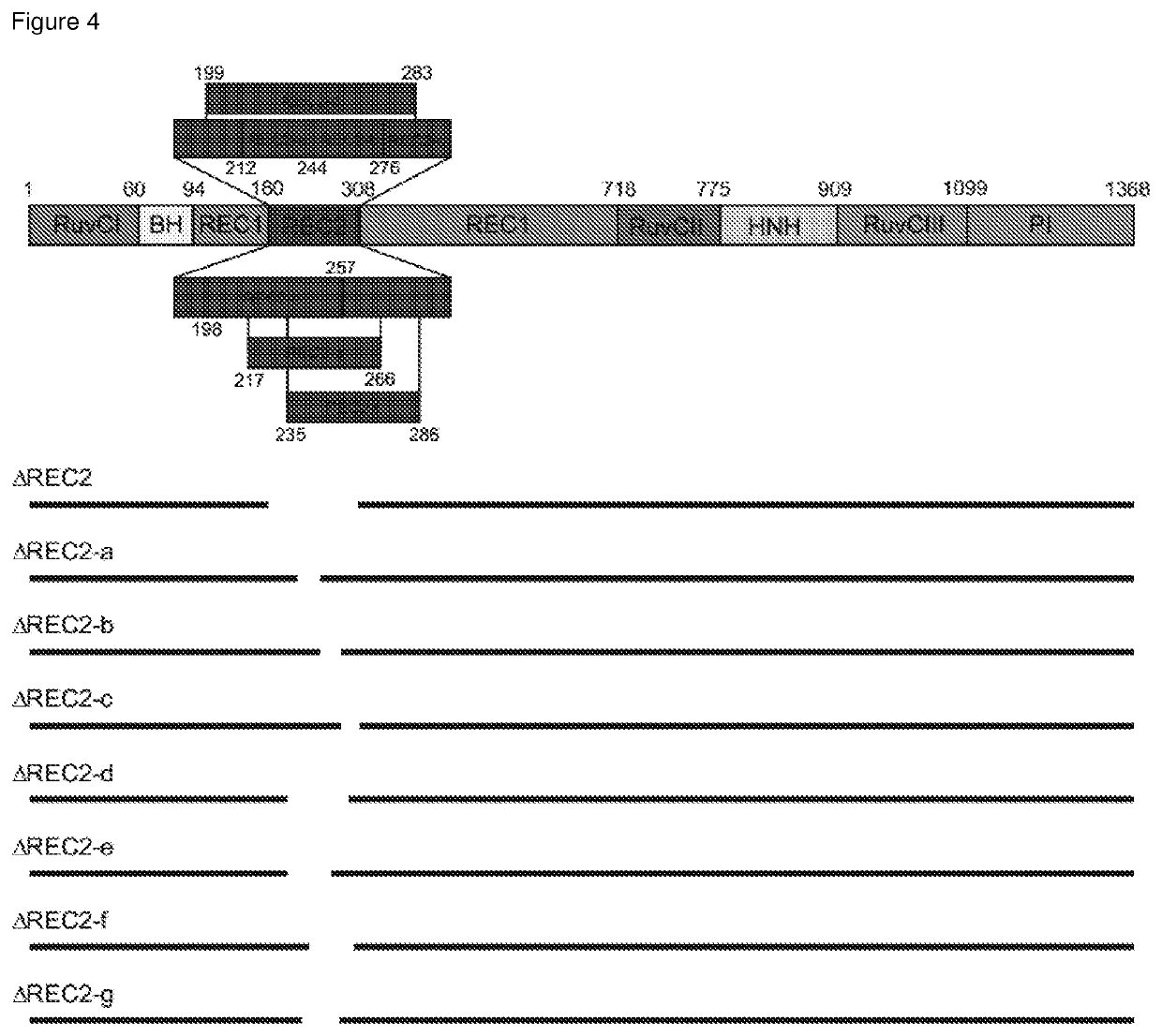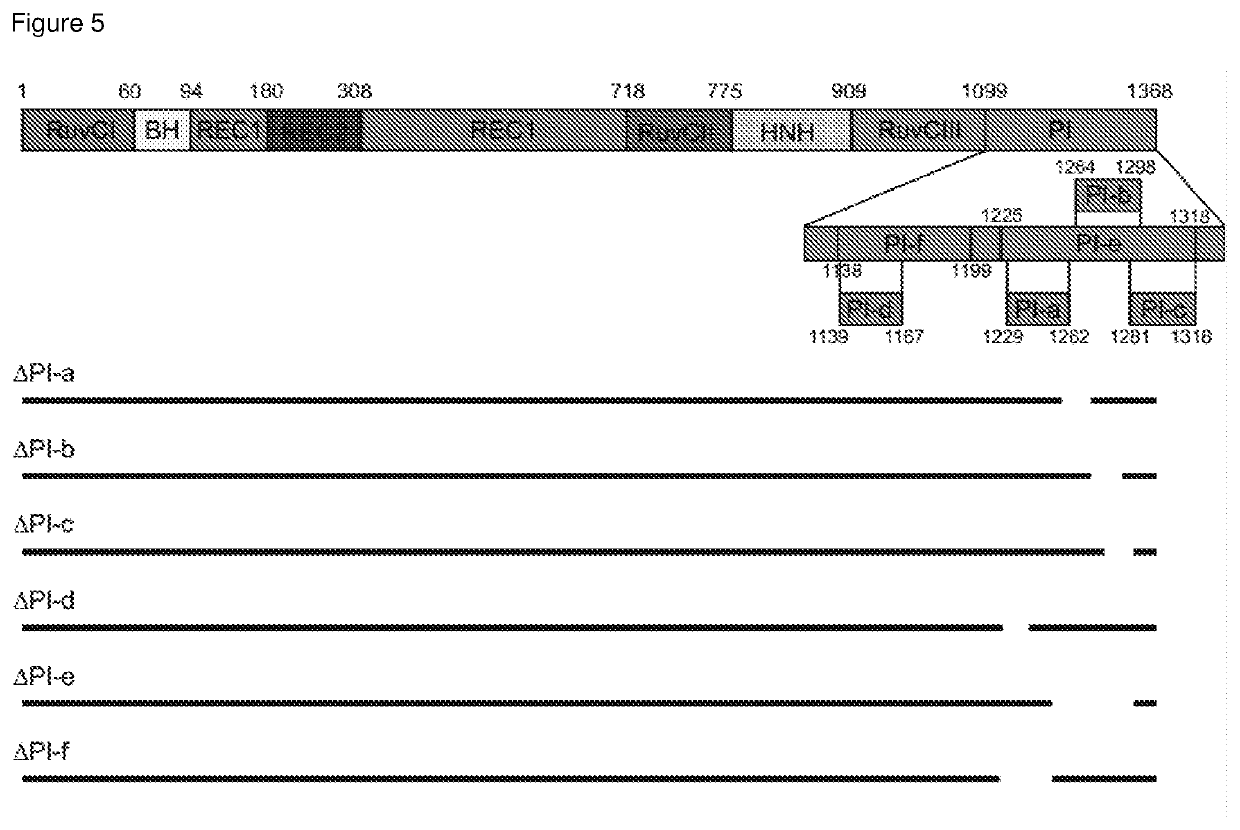Truncated crispr-cas proteins for DNA targeting
a technology of crispr-cas protein and dna targeting, which is applied in the field of engineered and optimized crispr-cas proteins, can solve the problems of limiting their widespread adoption, difficult program or difficult assembly, and double-strand breakag
- Summary
- Abstract
- Description
- Claims
- Application Information
AI Technical Summary
Benefits of technology
Problems solved by technology
Method used
Image
Examples
example 1
s Nucleases with Missense Mutations and Deletions
[0106]Overall, the inventors aimed to truncate different Cas enzymes, including Cas9 from Streptococcus pyogenes, rationally guided by the solved crystal structures of these proteins (Nishimasu, H. et al. Cell 156, 935-949 (2014); Nishimasu, H. et al. Cell 162, 1113-1126 (2015); Yamano, T. et al. Cell 165, 949-962 (2016)). For example, disrupting protein secondary structures (α-helices and β-sheets) was avoided.
[0107]As a proof-of-concept, the inventors deleted different parts of a catalytically dead Cas9 gene from Streptococcus pyogenes (dSpCas9) fused to a tripartite activator, VP64-p65-Rta (VPR) (Chavez, A. et al. Nat Methods 12, 326-328, doi:10.1038 / nmeth.3312 (2015)), and then tested the ability of each truncated dSpCas9-VPR fusion to activate the expression of a zsGreen reporter that was under the control of a minimal promoter with multiple binding sites for the enzyme. Using published crystal structures of SpCas9 as a guide, th...
PUM
| Property | Measurement | Unit |
|---|---|---|
| Fraction | aaaaa | aaaaa |
| Volume | aaaaa | aaaaa |
| Volume | aaaaa | aaaaa |
Abstract
Description
Claims
Application Information
 Login to View More
Login to View More - R&D
- Intellectual Property
- Life Sciences
- Materials
- Tech Scout
- Unparalleled Data Quality
- Higher Quality Content
- 60% Fewer Hallucinations
Browse by: Latest US Patents, China's latest patents, Technical Efficacy Thesaurus, Application Domain, Technology Topic, Popular Technical Reports.
© 2025 PatSnap. All rights reserved.Legal|Privacy policy|Modern Slavery Act Transparency Statement|Sitemap|About US| Contact US: help@patsnap.com



